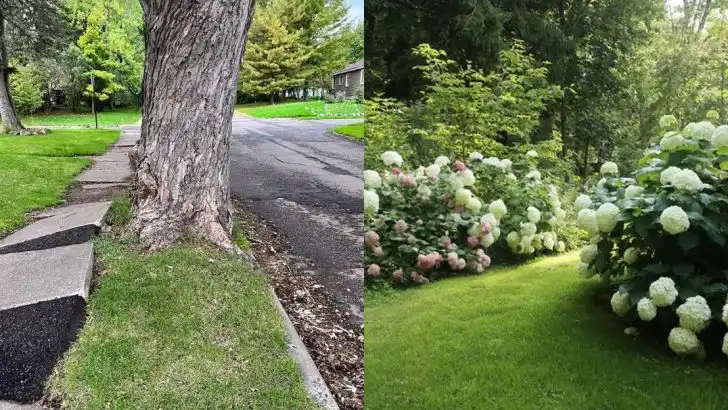Some plants are just waiting to wreck your house—literally. That charming shrub near your front steps? Its roots are plotting a slow-motion breakup with your foundation. Tiny cracks today, major repairs tomorrow. But don’t panic—just plant smarter. We’ve rounded up 12 foundation bullies that send roots deep, wide, and destructive. Think aggressive viburnums, monster bamboo, and deceptively innocent-looking trees. Then we hand you 12 root-friendly champs that play nice with concrete. Compact, well-behaved, and still stunning curbside. From dwarf conifers that mind their manners to ground-huggers that thrive without muscle-flexing underground. Keep the charm, lose the costly repair bills. It’s time to plant for beauty and peace of mind. Because no one wants their petunias breaking the basement.
Bamboo
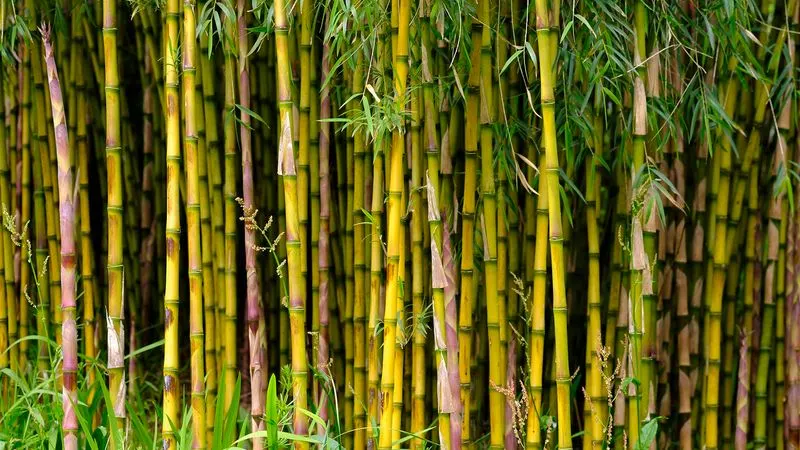
Bamboo is a fast-growing plant that brings a tropical feel to any garden. However, its aggressive root system is notorious for cracking concrete. With roots that spread rapidly, bamboo can quickly become invasive. Homeowners often regret planting it near foundations, as it can damage sidewalks and driveways. The roots can be challenging to contain, often requiring barriers or regular maintenance to keep them in check.
Despite its appeal, bamboo’s root behavior makes it a risky choice for planting near structures. Consider alternative options if you want to avoid potential structural damage.
Tree of Heaven
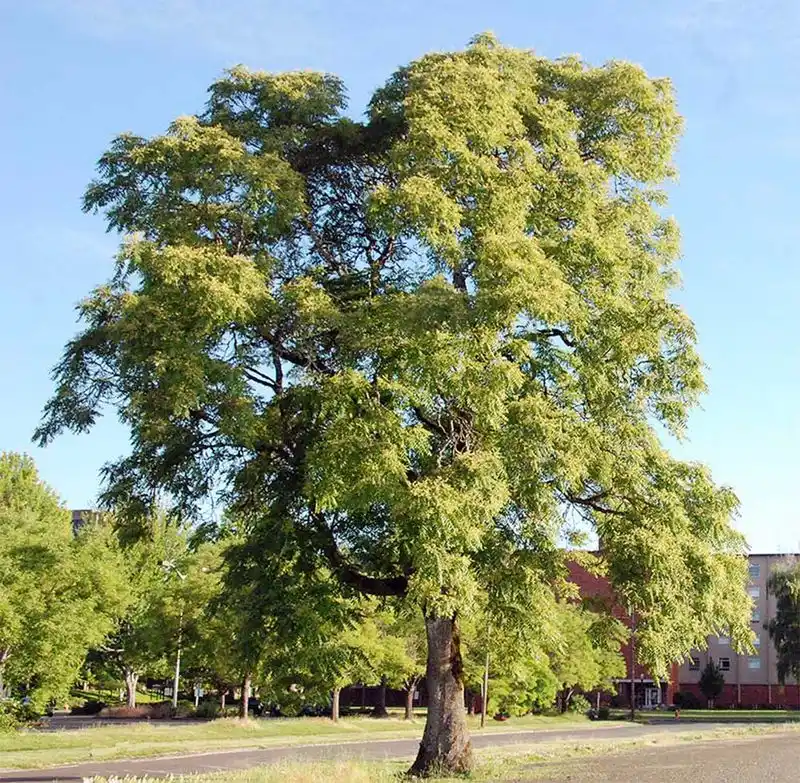
The Tree of Heaven, known for its rapid growth and resilience, can spell trouble for concrete surfaces. This invasive tree’s roots are aggressive and can spread far and wide, leading to cracks in pavements and foundations. Its ability to grow in poor soil conditions makes it a common choice in urban areas, but its root system can cause significant damage.
The tree’s adaptability is impressive, yet its potential for destruction makes it a plant to avoid near your home. Opt for more foundation-friendly trees to ensure your property remains intact.
Willow
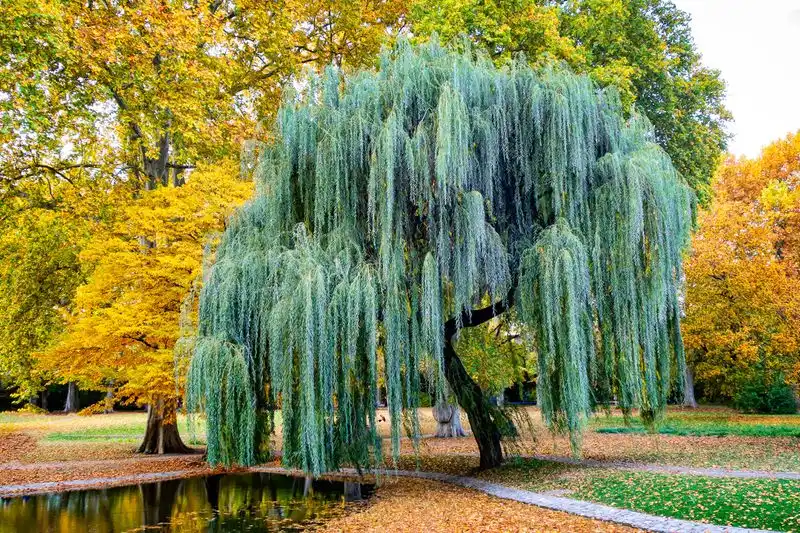
Willow trees are beloved for their graceful appearance and ability to thrive near water. However, their roots are equally drawn to moisture, making them a threat to concrete. These roots can extend great distances in search of water, often leading to cracked foundations and broken pipes.
While the willow’s beauty is undeniable, its root system’s relentless quest for moisture can result in costly damage. Consider planting willows far from any structures to enjoy their elegance without the worry of cracking concrete.
Silver Maple
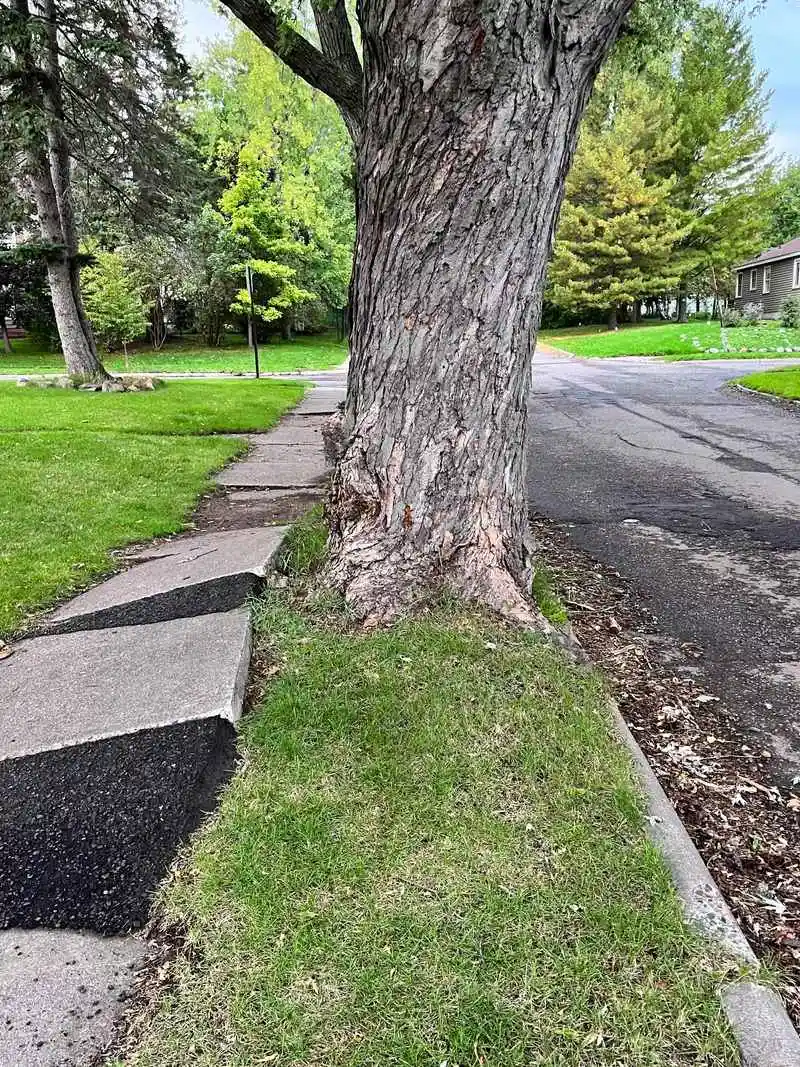
Silver Maple trees are appreciated for their fast growth and beautiful foliage, but their roots can be a nightmare. These trees have shallow root systems that spread wide and can easily lift sidewalks or crack driveways.
Their rapid growth only exacerbates the problem, as the roots keep expanding year after year. Although the silver maple provides ample shade, its root system can cause significant structural issues, making it unsuitable for planting near foundations.
Opt for trees with less invasive roots if you want to prevent concrete damage.
Sycamore
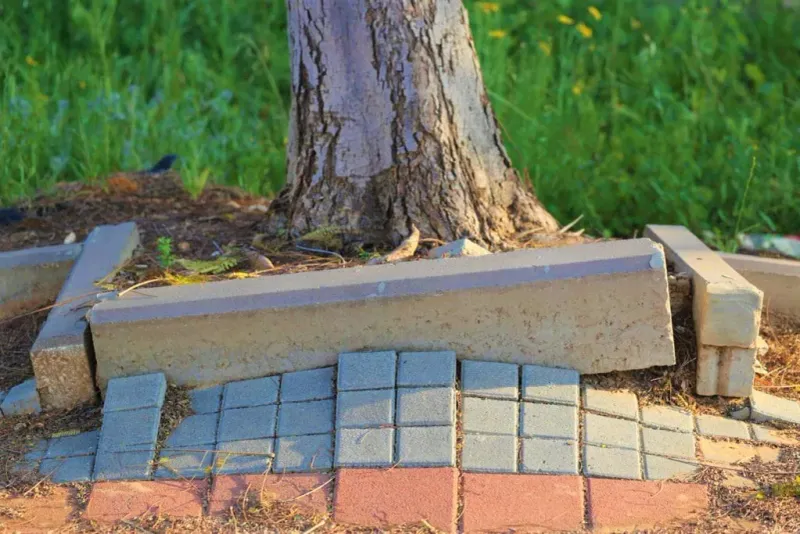
The majestic Sycamore is a sight to behold, but its roots can be damaging. Known for their robust and extensive root systems, sycamore trees can cause pavement upheaval and foundation cracks. Their roots spread far and wide, often reaching into sewer lines and causing blockages.
While their towering stature provides impressive shade, the sycamore’s roots can be a costly problem for homeowners. Planting these trees near concrete structures is ill-advised, as their potential for destruction is high.
Consider alternatives for a more foundation-friendly landscape.
Norway Maple
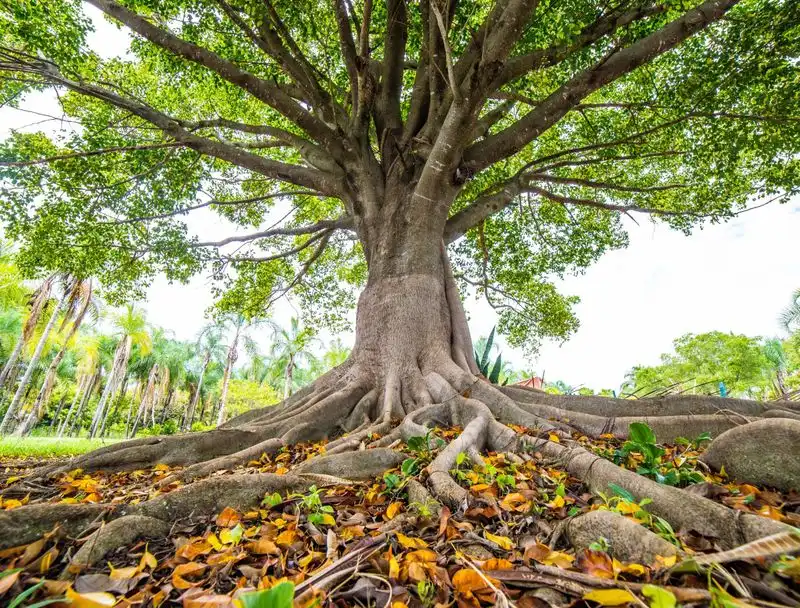
Norway Maple trees may be stunning with their vibrant fall colors, but their roots are a common cause of concern. These roots grow aggressively, often disrupting garden paths, sidewalks, and even foundations. Their dense and shallow root system is notorious for absorbing nutrients, leaving little for other plants nearby.
Despite their beauty, Norway Maples can cause significant structural damage if planted too close to concrete. Homeowners looking to preserve their property’s integrity should consider less invasive options.
Choose wisely to avoid potential headaches and costly repairs.
Poplar
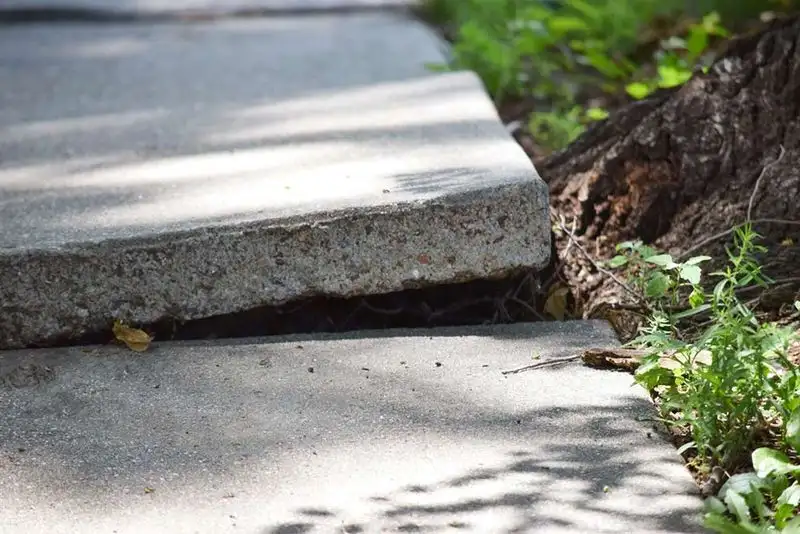
Poplar trees are known for their rapid growth and towering presence, but their roots can present serious challenges. These roots often surface above ground, causing damage to sidewalks and foundations. With a voracious appetite for water, poplar roots can extend far, leading to cracked concrete and blocked pipes.
While their height adds drama to any landscape, the risks associated with poplar roots often outweigh their benefits. Avoid planting them near structures to prevent potential destruction and maintain your property’s safety.
Oak
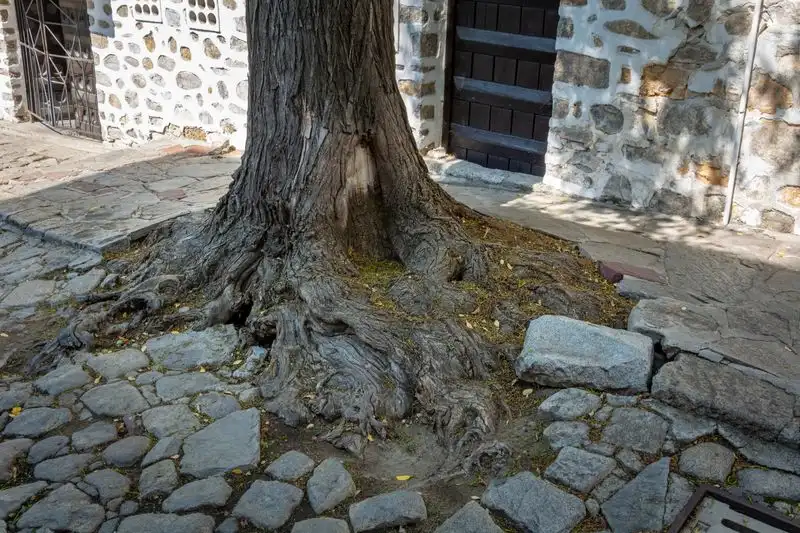
Oaks are revered for their strength and longevity, yet their roots can be equally formidable. These trees develop extensive root systems that can crack concrete foundations and disrupt underground utilities. Their roots spread both wide and deep, making them a force to be reckoned with.
While oaks provide a majestic presence and valuable shade, their potential to cause structural damage makes them unsuitable for planting near buildings. Opt for less intrusive options to enjoy a beautiful landscape without the worry of root-related issues.
Arborvitae
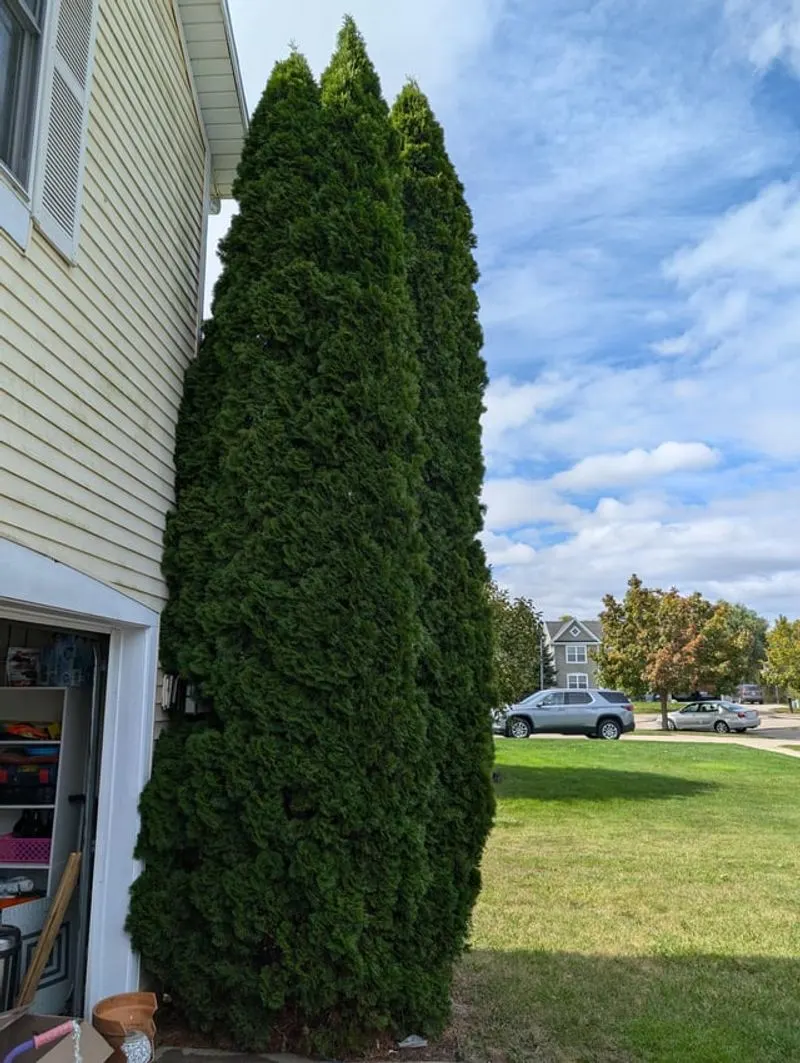
Arborvitae, with its evergreen charm, seems like a perfect garden addition. However, its roots can be unexpectedly troublesome. Though not as aggressive as some, they can still cause issues if planted too close to foundations. These roots tend to seek moisture, potentially leading to cracks in concrete surfaces.
While Arborvitae is popular for creating privacy screens, its roots’ potential to cause damage should not be overlooked. Plant them wisely to enjoy their beauty without the risk of structural problems.
Mulberry
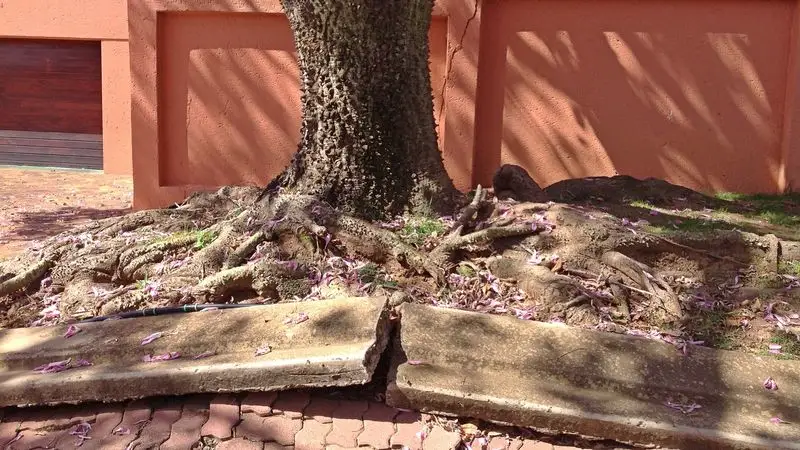
The Mulberry tree is often admired for its fruit and fast growth, but its roots can cause headaches. Known for spreading aggressively, mulberry roots can easily crack concrete and invade underground pipes. Their thirst for water drives them into places they shouldn’t be, leading to costly repairs.
Despite their bountiful fruit, mulberry trees’ invasive roots make them a risky choice near structures. Choose other fruit-bearing trees that offer similar benefits without the risk of structural damage.
Black Locust
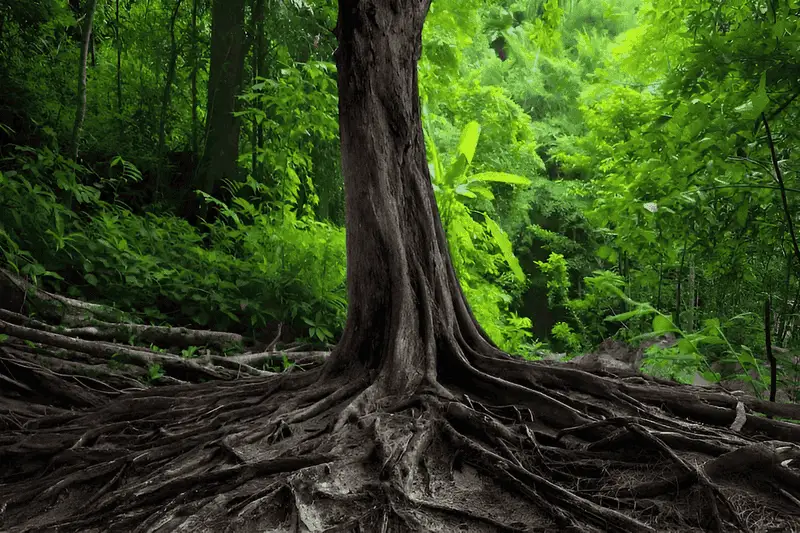
Black Locust trees are appreciated for their hard wood and resilience, but their roots can be problematic. Known for their ability to thrive in poor soils, these roots spread quickly and can disrupt pavements and foundations. They are often found pushing through concrete, causing unsightly and costly damage.
While Black Locust trees offer hardiness and charm, their roots’ potential to damage structures makes them a plant to avoid near concrete. Opt for trees with less aggressive root systems for a more harmonious landscape.
White Ash
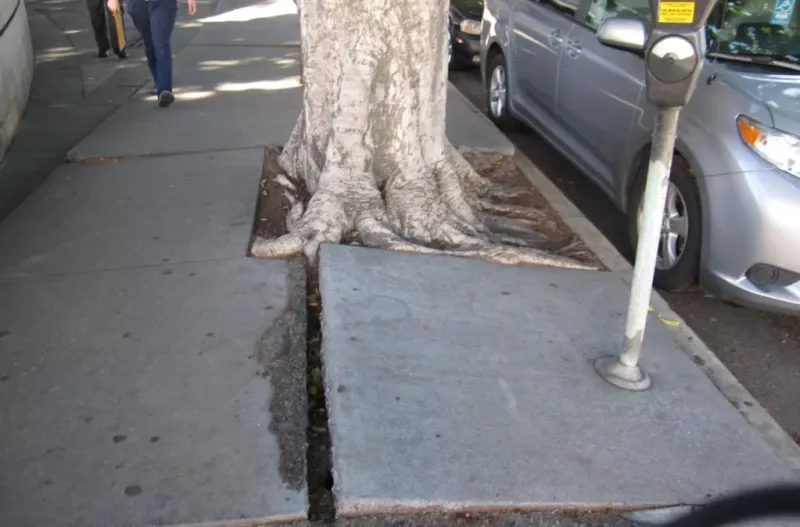
White Ash trees are celebrated for their beauty and shade-giving abilities, but their roots can pose a threat to concrete. These roots spread wide and deep, often causing driveways and sidewalks to crack. Their quest for water and nutrients can lead them into unwanted areas, creating structural problems.
While the White Ash is undeniably attractive, its roots’ potential to damage nearby structures cannot be ignored. Consider alternatives that offer similar benefits without the risk of root-related issues.
Japanese Maple

Japanese Maple trees are renowned for their delicate beauty and vibrant foliage. Unlike many larger trees, their roots are non-invasive and ideal for planting near foundations. These roots grow slowly and remain shallow, posing no threat to concrete surfaces.
Their graceful appearance makes them a perfect alternative to more aggressive trees. Japanese Maples bring a touch of elegance and color to any garden without the risk of structural damage. Consider planting them for a safe and beautiful landscape.
Enjoy the peace of mind they provide with their gentle root systems.
Dogwood
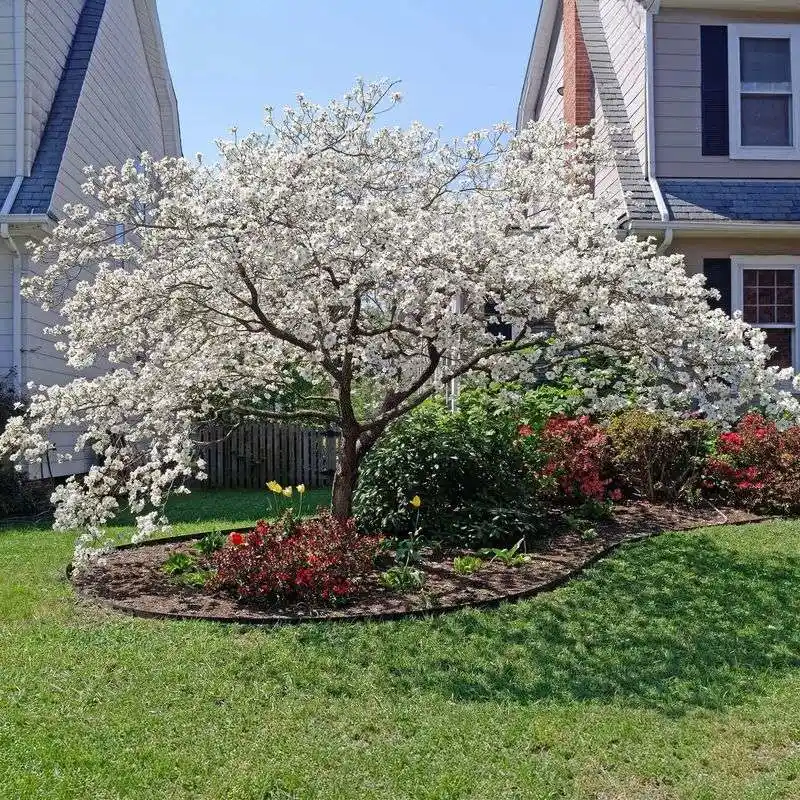
The Dogwood tree, with its delicate blossoms, is a favorite among gardeners. Its roots are well-mannered, growing slowly and remaining shallow. This makes the Dogwood an excellent choice for planting near structures without risking damage to concrete.
Beyond its beauty, the Dogwood offers seasonal interest with its flowers and attractive bark. Choosing Dogwood ensures a harmonious garden without the worry of aggressive roots. It’s a safe and charming alternative for your landscape, providing elegance and ease.
Embrace the serenity of a Dogwood-filled garden.
Serviceberry
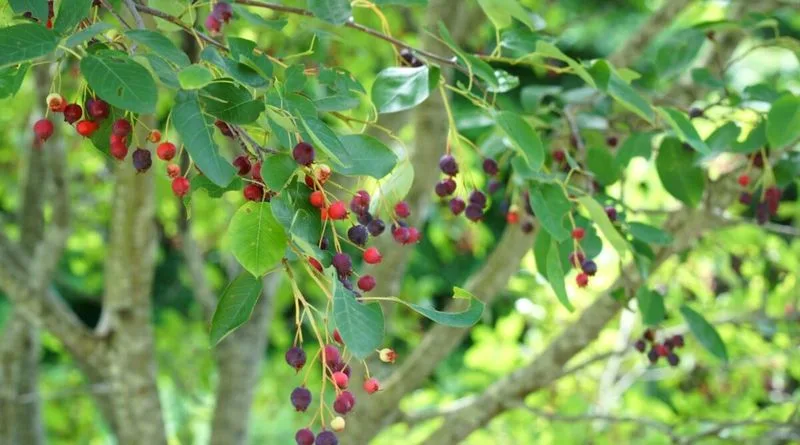
Serviceberry trees are loved for their seasonal blooms and edible berries. Their roots are non-threatening, growing moderately and posing no risk to concrete. This makes them a fantastic alternative to more invasive trees.
Serviceberries not only offer visual appeal but also provide food for wildlife. Their manageable root system ensures your foundation remains intact while adding beauty to your garden. Planting Serviceberries can transform your landscape into a vibrant and safe haven.
Enjoy the dual benefits of aesthetics and safety they bring.
Redbud
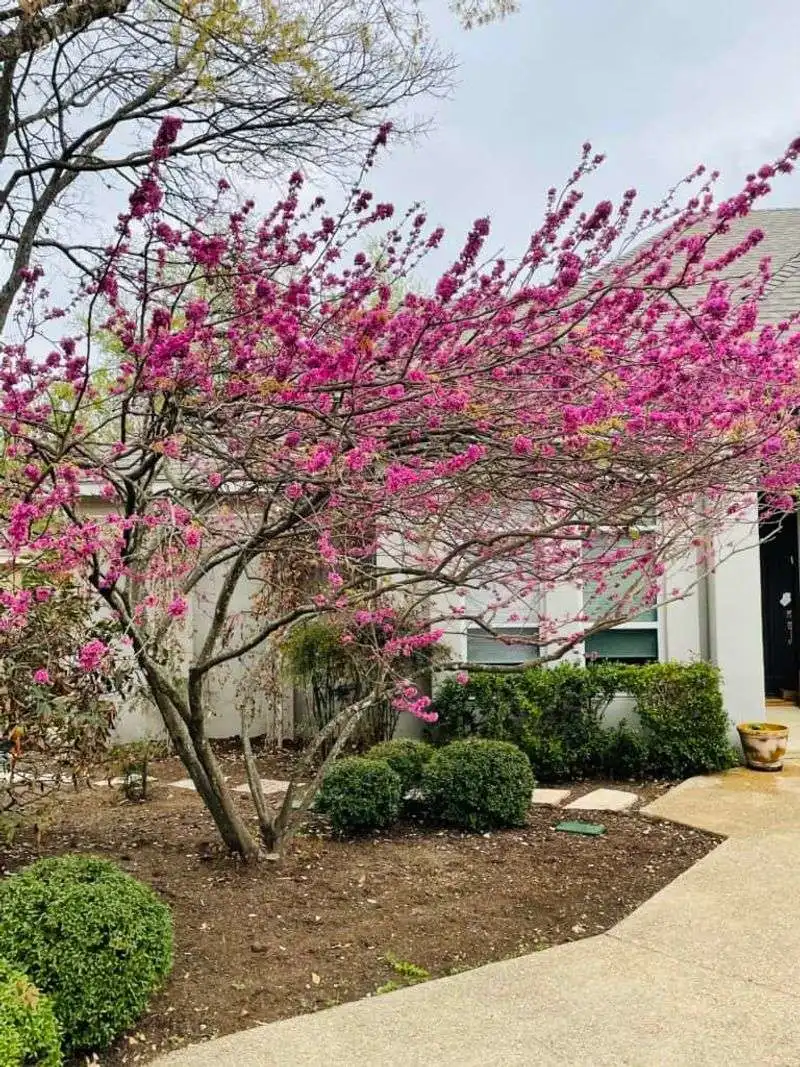
Redbud trees are cherished for their early spring blossoms and heart-shaped leaves. Their roots are small and shallow, making them a wise choice for planting near concrete without fear of damage.
The Redbud’s vibrant flowers bring joy to any garden, creating a cheerful and inviting atmosphere. As a foundation-friendly option, they provide beauty and peace of mind. Consider the Redbud for a charming and safe addition to your landscape.
Celebrate the burst of color they bring each year, without the worry of root problems.
Amelanchier
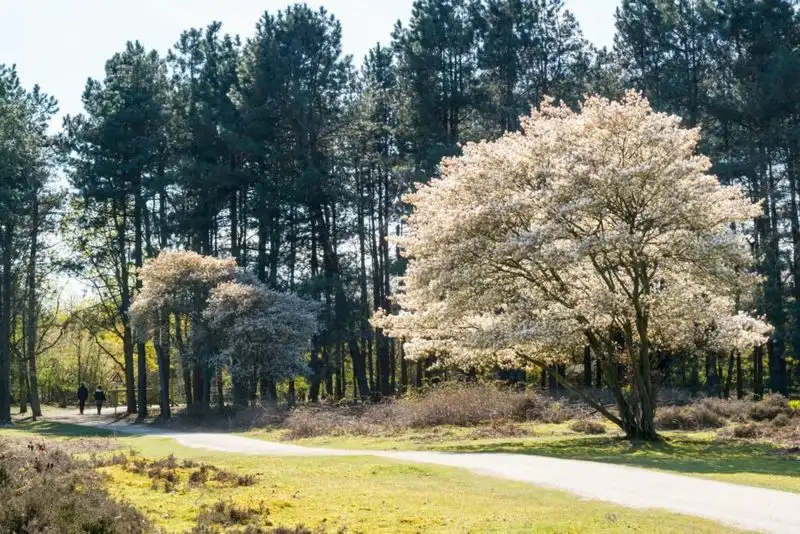
Amelanchier trees, also known as Saskatoon or Juneberry, offer multi-season interest and non-invasive roots. Their roots grow slowly and remain shallow, posing no threat to concrete structures.
With blossoms in spring and vibrant foliage in fall, Amelanchiers provide year-round beauty. Their manageable root system makes them a safe choice for foundation planting. Transform your garden with the understated elegance of an Amelanchier, and enjoy the peace of mind they offer.
Delight in their seasonal show without the risk of root damage.
Holly
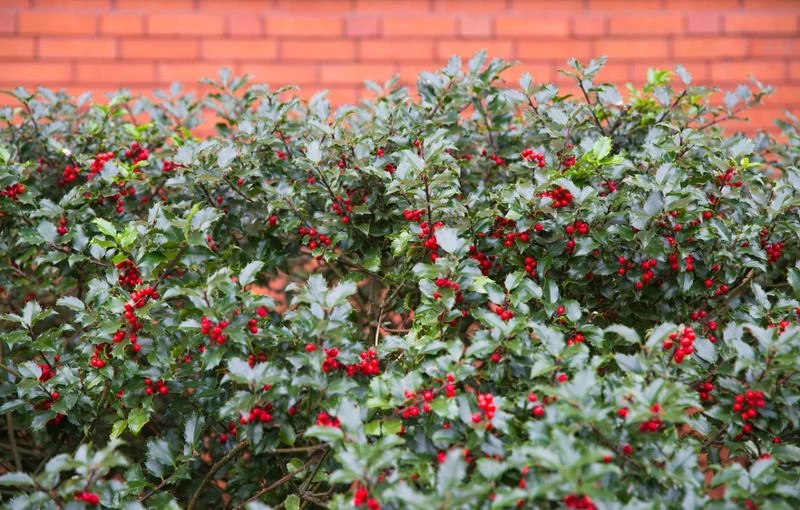
Holly bushes are adored for their evergreen foliage and cheerful red berries. Their roots are compact and non-invasive, making them ideal for foundation planting.
Hollies add a festive touch to gardens, especially during winter, when their berries provide a splash of color. Their roots pose no threat to concrete, offering a safe alternative to more aggressive plants. Embrace the versatility and charm of Holly for a worry-free garden.
Enjoy the year-round beauty they bring to your landscape.
Boxwood
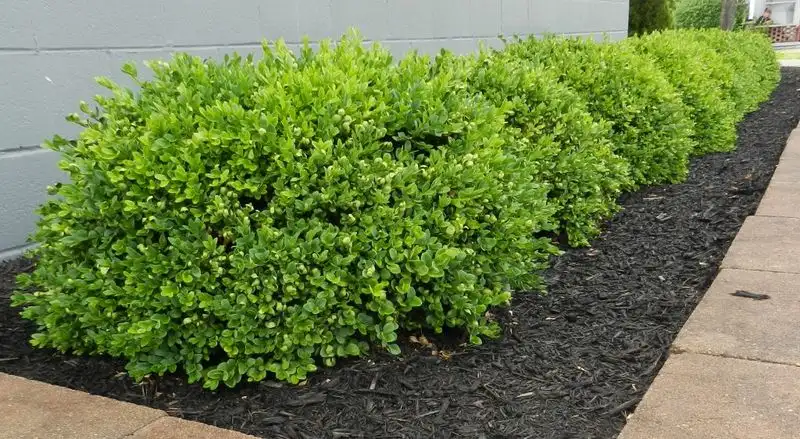
Boxwoods are prized for their versatility and neat appearance. Their roots are well-behaved, growing slowly and posing no risk to concrete surfaces.
These shrubs are perfect for creating low hedges and topiaries, adding structure and elegance to any garden. Boxwoods’ non-aggressive roots make them an excellent choice for foundation planting. Enjoy the timeless appeal they bring without worrying about structural damage.
Create a classic and safe garden with the addition of Boxwoods.
Lavender

Lavender is cherished for its fragrant blooms and calming presence. Its roots are small and drought-tolerant, posing no threat to concrete surfaces.
Ideal for planting near foundations, lavender adds a touch of color and aroma to any garden. Its manageable root system ensures safety while providing beauty and a soothing atmosphere. Consider lavender for a stress-free and aromatic addition to your landscape.
Embrace the tranquility it offers without the worry of root problems.
Hydrangea
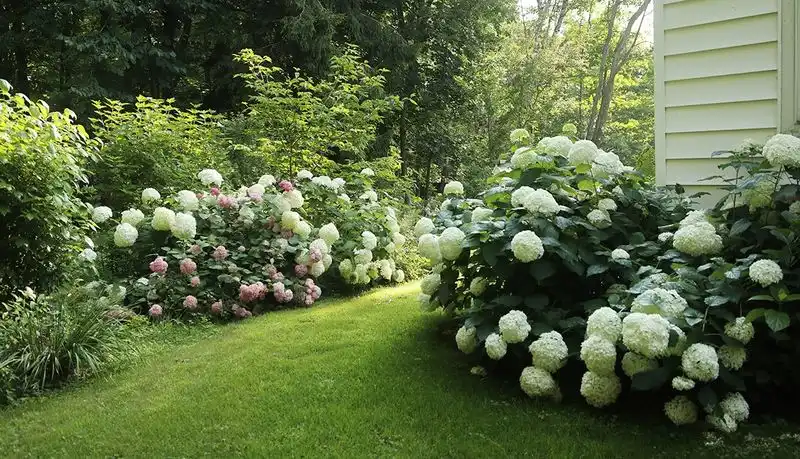
Hydrangeas are beloved for their large, vibrant blooms and lush foliage. Their roots are moderate and non-invasive, making them safe for planting near foundations.
These shrubs add a splash of color to gardens, providing visual interest throughout the growing season. Hydrangeas’ manageable roots ensure no risk to concrete, making them a wise choice for any landscape. Enjoy their beauty and charm without the worry of structural issues.
Welcome the elegance of Hydrangeas into your garden.
Perennial Geranium
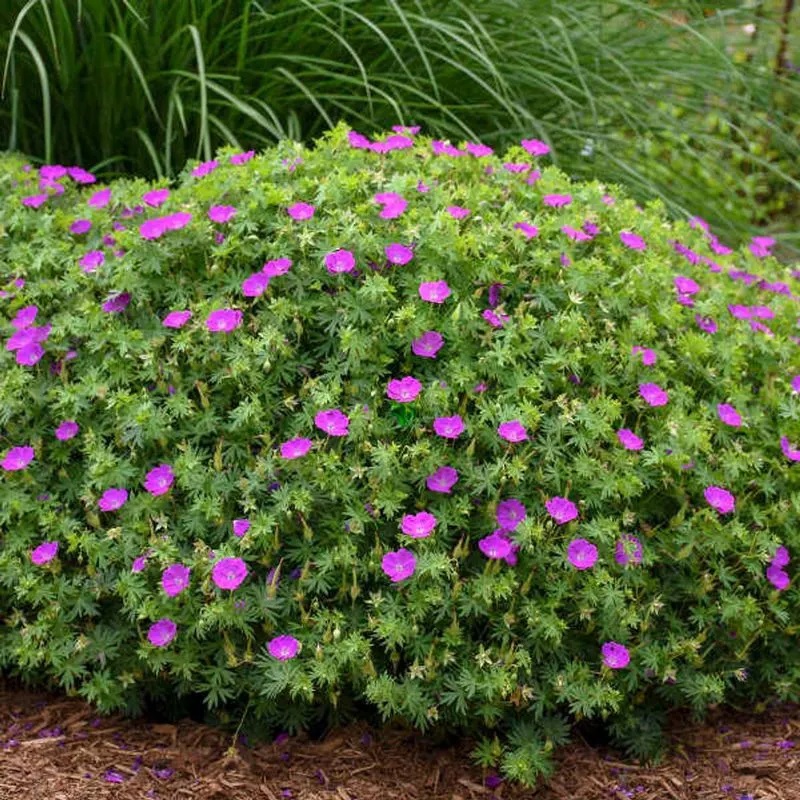
Perennial Geraniums offer long-lasting blooms and a soft, cottage-garden feel. Their roots are shallow and non-invasive, making them suitable for planting near concrete surfaces.
These charming flowers bring color and texture to gardens without threatening foundations. The gentle nature of their roots ensures safety, allowing for carefree planting. Consider Perennial Geraniums for a delightful and secure addition to your landscape.
Enjoy the whimsical touch they add to any garden setting.
Heuchera
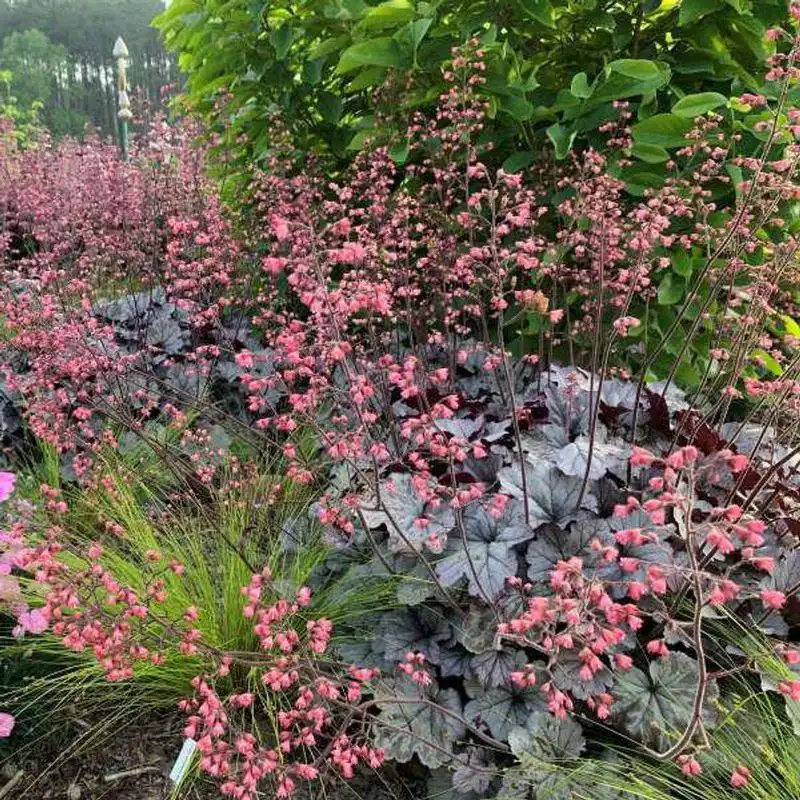
Heuchera, also known as Coral Bells, is prized for its colorful foliage and delicate blooms. Its roots are compact and non-aggressive, making it a safe choice for foundation planting.
With a wide range of leaf colors, Heuchera adds year-round interest to gardens. Their manageable roots ensure no risk to concrete, offering a secure alternative to more invasive plants. Embrace the beauty and safety of Heuchera in your landscape.
Transform your garden with their vibrant presence.
Wisteria
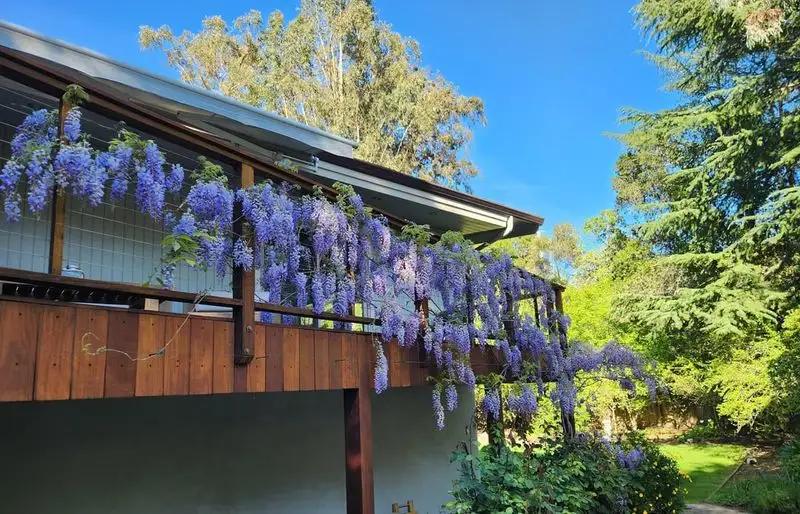
Wisteria, with its enchanting purple blooms, can transform any garden into a whimsical escape. However, beneath its romantic facade lies a powerful root system capable of toppling fences and cracking concrete. These roots aggressively seek out moisture, making them a threat to nearby foundations.
Many gardeners love Wisteria for its beauty, but it’s wise to plant it away from structures or use containers to restrain its growth. Surprisingly, this seemingly gentle plant can become a formidable foe if not managed properly.
For those enchanted by its elegance, consider confining its roots to prevent unwanted damage.

